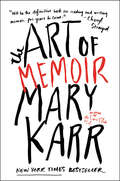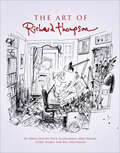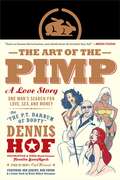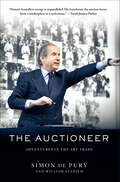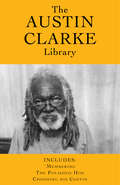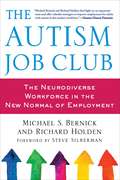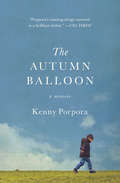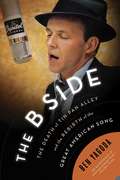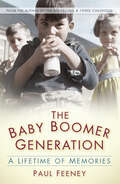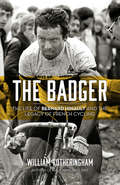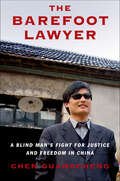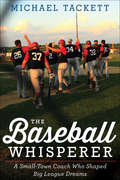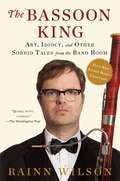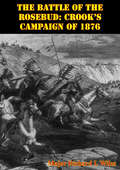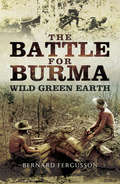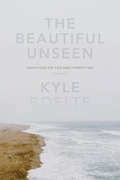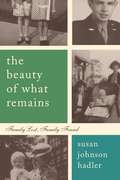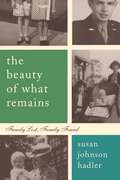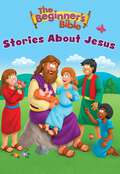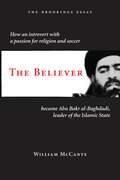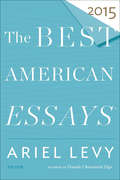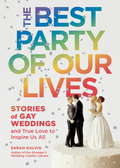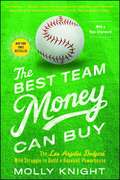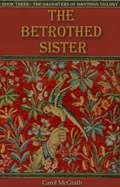- Table View
- List View
The Art of Medicine in Early China
by Miranda BrownIn this book, Miranda Brown investigates the myths that acupuncturists and herbalists have told about the birth of the healing arts. Moving from the Han (206 BC–AD 220) and Song (960–1279) dynasties to the twentieth century, Brown traces the rich history of Chinese medical historiography and the gradual emergence of the archive of medical tradition. She exposes the historical circumstances that shaped the current image of medical progenitors: the ancient bibliographers, medieval editors, and modern reformers and defenders of Chinese medicine who contributed to the contemporary shape of the archive. Brown demonstrates how ancient and medieval ways of knowing live on in popular narratives of medical history, both in modern Asia and in the West. She also reveals the surprising and often unacknowledged debt that contemporary scholars owe to their pre-modern forebears for the categories, frameworks, and analytic tools with which to study the distant past.
The Art of Memoir
by Mary KarrCredited with sparking the current memoir explosion, Mary Karr's The Liars' Club spent more than a year at the top of the New York Times list. She followed with two other smash bestsellers: Cherry and Lit, which were critical hits as well. For thirty years Karr has also taught the form, winning graduate teaching prizes for her highly selective seminar at Syracuse, where she mentored such future acclaimed authors as Cheryl Strayed, Keith Gessen, and Koren Zailckas. In The Art of Memoir, she synthesizes her expertise as professor and therapy patient, writer and spiritual seeker, recovered alcoholic and "black-belt sinner," providing a unique window into the mechanics and art of the form that is as irreverent, insightful, and entertaining as her own work in the genre. Anchored by excerpts from her favorite memoirs and anecdotes from fellow writers' experience, The Art of Memoir lays bare Karr's own process. (Plus all those inside stories about how she dealt with family and friends get told--and the dark spaces in her own skull probed in depth.) As she breaks down the key elements of great literary memoir, she breaks open our concepts of memory and identity, and illuminates the cathartic power of reflecting on the past; anybody with an inner life or complicated history, whether writer or reader, will relate. Joining such classics as Stephen King's On Writing and Anne Lamott's Bird by Bird, The Art of Memoir is an elegant and accessible exploration of one of today's most popular literary forms--a tour de force from an accomplished master pulling back the curtain on her craft.
The Art of Richard Thompson
by Chris Sparks Bill Watterson David Apatoff Nick Galifianakis Mike RhodeA tribute to the cartoonist known as “Michelangelo with a sense of humor,” the creator of the beloved comic strip Cul de Sac (Pat Oliphant, editorial cartoonist).Richard Thompson is renowned among cartoonists as an “artist’s” cartoonist. Little known to all but those close to him is the extent of his art talent. This is the book that will enlighten the rest of us and delight us with the sheer beauty of his work.Divided into six sections, each beginning with an introductory conversation between Thompson and six well-known peers, including Bill Watterson, the book will present Thompson’s illustration work, caricatures, and his creation, Richard’s Poor Almanack. Each section is highly illustrated, many works in color, most of them large and printed one-to-a-page. The diversity of work will help cast a wider net, well beyond Cul de Sac fans.“Even working wordlessly, from his wheelchair, Thompson was, and is, the supreme comedian. And that comic timing is among the embarrassment of rich gifts on beautiful display in The Art of Richard Thompson . . . one of the most anticipated art-retrospective books of the year.” —The Washington Post“A new collection of art, interviews and commentaries . . . a more complete portrait of a multi-talented artist whose career ended far too early.” —IndieWire
The Art of the Pimp
by Robert Grossman Pablo F. Fenjves Dennis HofDennis Hof, proprietor of the world-famous Moonlite BunnyRanch brothel and the P.T. Barnum of prostitution, charts his path to fame and infamy, while dispensing homespun wisdom about sex, sales, money, and how to live as the country's most recognizable pimp.In The Art of the Pimp, Dennis Hof offers a hilarious, insightful, behind-the-scenes look at life as the proprietor of The Moonlight BunnyRanch, the world's most famous legal brothel, and recounts his chaotic life as the king of America's sex industry. Hof, the star of HBO's critically lauded series Cathouse, reveals the tricks of turning tricks, the secrets of his outrageous marketing stunts, and scandalous details of his friendships with porn stars, prostitutes, and politicians. Readers will learn how Hof's "girls" negotiate the highest prices for sex, the dirty little secrets of getting men to fall in love with them, and the inside tales of "The Girlfriend Experience," the #1 requested menu item. The Art of the Pimp will take readers on a wild ride through his countless sexual conquests, romantic failures, and business successes.
The Auctioneer: Adventures in the Art Trade
by William Stadiem Simon de PuryJust as William Goldman, the ultimate screenwriter, took us inside Hollywood, Simon de Pury, the ultimate art player, will take us inside an even more secretive business, whose staggering prices, famous collectors, and high crimes are front page news almost every day. The former Chairman of Sotheby's Europe, the former owner of Sotheby's rival Phillips de Pury, and currently a London-based dealer and advisor to great collectors around the world, Simon has one of the highest profiles of any non-artist in the art world. Even though he has an ancient title and the aura of an elegant Swiss banker, Simon is famous as an iconoclast and is known as "The Mick Jagger of Auctions" for his showmanship and exuberance. His whole life in art has been devoted to bringing art to the public and to the juxtaposition of high and low. Movie stars, musicians, and athletes compete with hedge funders and billionaires for the great art, and Simon is their pied piper; he wants to turn the world onto art and this book will be his message.
The Austin Clarke Library: 'Membering / The Polished Hoe / Choosing His Coffin
by Austin ClarkeGathered together are three extraordinary books by renowned storyteller and memoirist Austin Clarke. ’Membering, Clarke’s breathtaking memoir, spans over fifty years of his life as a writer, chronicling his coming to Canada in the fifties, formative experiences with Malcolm X, Chinua Achebe, and LeRoi Jones, and bursting with cultural insights and poignant memories from a narrative master. In The Polished Hoe, winner of the Giller Prize and the 2003 Commonwealth Writers’ Prize, when an elderly Bimshire village woman calls the police to confess to a murder, the result is a shattering all-night vigil that brings together elements of the African diaspora in one epic sweep. Set on the post-colonial West Indian island of Bimshire in 1952, The Polished Hoe unravels over the course of 24 hours but spans the lifetime of one woman and the collective experience of a society informed by slavery. Choosing His Coffin is a selection of Clarke’s finest work from more than forty years of storytelling, drawing on his Caribbean roots and his years in Canada. These stories range in theme from growing up in West Indian society and what it means to be black in both the United States and Canada to surviving as an immigrant in a predominantly Anglo-Saxon culture.
The Autism Job Club: The Neurodiverse Workforce in the New Normal of Employment
by Steve Silberman Richard Holden Michael BernickThe Autism Job Club is a groundbreaking book for bringing adults with autism and other neuro-diverse conditions into the work world. This second edition of The Autism Job Club includes a new Foreword by Steve Silberman, author of the best-selling NeuroTribes, along with an Afterword by the authors. The Afterword covers the many employment initiatives for adults on the autism spectrum launched just in the three years since the book was originally published. The book has its basis in the autism job club that the authors have been part of in the San Francisco Bay Area, the job-creation and job-placement efforts the club has undertaken, and similar efforts throughout the United States. The authors review the high unemployment rates among adults with autism and other neuro- diverse conditions more than two decades after the ADA. Bernick and Holden also outline and explain six strategies that, taken together, will reshape employment for adults with autism: the art of the autism job coach; the autism advantage in technology employment; autism employment and the internet economy; autism employment and the practical/craft economy; autism and extra-governmental job networks; autism and public service employment.The Autism Job Club is a vital resource for adults with autism, their families, and advocates who are committed to neuro-diverse employment, not unemployment. But it also speaks to a far broader audience interested in how to carve out a place for themselves or others in an increasingly competitive job world.
The Autumn Balloon
by Kenny Porpora<P>Every autumn, Kenny Porpora would watch his heartbroken mother scribble messages on balloons and release them into the sky above Long Island, one for each family member they'd lost to addiction. <P> As the number of balloons grew, his mother fell deeper into alcoholism, drinking away her sorrows every night in front of the television, where her love of Regis Philbin provided a respite from the sadness around her. <P> When their house was foreclosed upon, Kenny's mother absconded with him and his beloved dog and fled for the Arizona desert, joining her heroin-addicted brother on a quixotic search for a better life. <P>What followed was an outlaw adolescence spent in constant upheaval surrounded by bizarre characters and drug-addicted souls. <P>In the wake of unspeakable loss, Kenny convinced a college to take a chance on him, and turned to the mentors, writers, and poets he found to rebuild the family he lost, and eventually graduated from the Ivy League with a new life. <P>Porpora's memoir is the story of a deeply dysfunctional but loving family, and follows his life from the chaos of his youth to his triumphs in the Ivy League. <P>At times darkly comic, at times elegiac, The Autumn Balloon is a beautifully written testament to the irreplaceable bonds of family, even under the most trying circumstances, and one that marks the debut of an exciting new writer. <P><b>A New York Times Bestseller</b>
The B Side
by Ben YagodaFrom an acclaimed cultural critic, a narrative and social history of the Great American Songwriting era. Everybody knows and loves the American Songbook. But it's a bit less widely understood that in about 1950, this stream of great songs more or less dried up. All of a sudden, what came over the radio wasn't Gershwin, Porter, and Berlin, but "Come on-a My House" and "How Much Is That Doggie in the Window?" Elvis and rock and roll arrived a few years later, and at that point the game was truly up. What happened, and why? In The B Side, acclaimed cultural historian Ben Yagoda answers those questions in a fascinating piece of detective work. Drawing on previously untapped archival sources and on scores of interviews--the voices include Randy Newman, Jimmy Webb, Linda Ronstadt, and Herb Alpert--the book illuminates broad musical trends through a series of intertwined stories. Among them are the battle between ASCAP and Broadcast Music, Inc.; the revolution in jazz after World War II; the impact of radio and then television; and the bitter, decades-long feud between Mitch Miller and Frank Sinatra. The B Side is about taste, and the particular economics and culture of songwriting, and the potential of popular art for greatness and beauty. It's destined to become a classic of American musical history.
The Baby Boomer Generation: A Lifetime of Memories
by Paul FeeneyDo you remember washing in a tin bath by the fire, using outside lavatories and not having a television? Did you grow up in the 1950s and were you a teenager in the swinging sixties? If the Festival of Britain, food rationing and the Queen’s coronation are among your earliest memories then you belong to the post-war baby boomer generation. How did we end up here, in the second decade of the twenty-first century, when it all just seems like yesterday? In this fascinating new trip down memory lane, Paul Feeney remembers what it has been like to live through the eventful second half of the twentieth century. This nostalgic journey through an era of change will resonate with anyone who began their innocent childhood years in austerity and has lived through a lifetime of ground-breaking events to the much changed Britain of today.
The Badger: The Life of Bernard Hinault and the Legacy of French Cycling
by William FotheringhamThe thrilling life of France's finest cyclist Bernard Hinault is one of the greatest cyclists of all time. He is a five-time winner of the Tour de France and the only man to have won each of the Grand Tours on more than one occasion. Three decades after his retirement, Hinault remains the last Frenchman to win the Tour de France and his victory in 1985 marks the turning point for a nation who had dominated the first eight decades of the race they had invented. In this biography, bestselling author William Fotheringham details how Hinault, nicknamed the "Badger" for his combative style, was the last old-school champion: a larger-than-life personality from a working-class background, capable of winning on all terrains, in major tours, and one-day classics. A full portrait of this fascinating character, The Badger also explores the reasons why France, the nation that considers itself cycling's home, has found it so hard to produce another champion.
The Barefoot Lawyer: A Blind Man's Fight for Justice and Freedom in China
by Chen GuangchengAn electrifying memoir by the blind Chinese activist who inspired millions with the story of his fight for justice and his belief in the cause of freedomIt was like a scene out of a thriller: one morning in April 2012, China's most famous political activist—a blind, self-taught lawyer—climbed over the wall of his heavily guarded home and escaped. Days later, he turned up at the American embassy in Beijing, and only a furious round of high-level negotiations made it possible for him to leave China and begin a new life in the United States.Chen Guangcheng is a unique figure on the world stage, but his story is even more remarkable than anyone knew. The son of a poor farmer in rural China, blinded by illness when he was an infant, Chen was fortunate to survive a difficult childhood. But despite his disability, he was determined to educate himself and fight for the rights of his country's poor, especially a legion of women who had endured forced sterilizations and abortions under the hated "one child" policy. Repeatedly harassed, beaten, and imprisoned by Chinese authorities, Chen was ultimately placed under house arrest. After nearly two years of increasing danger, he evaded his captors and fled to freedom.Both a riveting memoir and a revealing portrait of modern China, The Barefoot Lawyer tells the story of a man who has never accepted limits and always believed in the power of the human spirit to overcome any obstacle.
The Baseball Whisperer: A Small-Town Coach Who Shaped Big League Dreams
by Michael Tackett&“Field of Dreams was only superficially about baseball. It was really about life. So is The Baseball Whisperer . . . with the added advantage of being all true.&” —MLB.com From an award-winning journalist, this is the story of a legendary coach and the professional-caliber baseball program he built in America's heartland, where boys would come summer after summer to be molded into ballplayers—and men. Clarinda, Iowa, population 5,000, sits two hours from anything. There, between the cornfields and hog yards, is a ball field with a bronze bust of a man named Merl Eberly, who specialized in second chances and lost causes. The statue was a gift from one of Merl&’s original long-shot projects, a skinny kid from the Los Angeles ghetto who would one day become a beloved Hall-of-Fame shortstop: Ozzie Smith. The Baseball Whisperer traces the &“deeply engrossing&” story (Booklist, starred review) of Merl Eberly and his Clarinda A&’s baseball team, which he tended over the course of five decades, transforming them from a town team to a collegiate summer league powerhouse. Along with Ozzie Smith, future manager Bud Black, and star player Von Hayes, Merl developed scores of major league players. In the process, he taught them to be men, insisting on hard work, integrity, and responsibility. More than a book about ballplayers in the nation&’s agricultural heartland, The Baseball Whisperer is the story of a coach who put character and dedication first, reminding us of the best, purest form of baseball excellence. &“Mike Tackett, talented journalist and baseball lover, has hit the sweet spot of the bat with his first book. The Baseball Whisperer takes one coach and one small Iowa town and illuminates both a sport and the human spirit.&” —David Maraniss, New York Times-bestselling author of Clemente and When Pride Still Mattered
The Bassoon King: My Life in Art, Faith, and Idiocy
by Rainn WilsonRainn Wilson's memoir about growing up geeky and finally finding his place in comedy, faith, and life. For nine seasons Rainn Wilson played Dwight Schrute, everyone's favorite work nemesis and beet farmer. Viewers of The Office fell in love with the character and grew to love the actor who played him even more. Rainn founded a website and media company, SoulPancake, that eventually became a bestselling book of the same name. He also started a hilarious Twitter feed (sample tweet: "I'm not on Facebook" is the new "I don't even own a TV") that now has more than four million followers. Now, he's ready to tell his own story and explain how he came up with his incredibly unique sense of humor and perspective on life. He explains how he grew up "bone-numbingly nerdy before there was even a modicum of cool attached to the word." The Bassoon King chronicles his journey from nerd to drama geek ("the highest rung on the vast, pimply ladder of high school losers"), his years of mild debauchery and struggles as a young actor in New York, his many adventures and insights about The Office, and finally, Wilson's achievement of success and satisfaction, both in his career and spiritually, reconnecting with the artistic and creative values of the Bahá'í faith he grew up in.From the Hardcover edition.
The Battle Of The Rosebud: Crook’s Campaign Of 1876
by Major Richard I. WilesThis study of the "Battle of the Rosebud" shows parallels between the army of 1876 and our army today. It briefly investigates the linkage of National Policy, political objectives, National Military Strategy, and the operational level of war. The army of 1876, like the army of today, experienced drastic downsizing. It had problems adjusting doctrine to the type of fight they were experiencing, not unlike our experience in Vietnam. The study of the battle provides some lessons we have had to relearn in the recent past. It is a study of how a relatively small, unsophisticated culture fought and won against an adversary that was vastly superior in population, organization, technology and resources. As a secondary benefit, the study of this battle offers a look at the advantages, disadvantages and compromises that must be considered in combined warfare. For these reasons, this study holds powerful lessons for soldiers serving in our armed forces today. The struggles with doctrine, training the force, force structure, combined warfare, and leadership challenges are just some of the parallels that can be drawn between Crook's Big Horn and Yellowstone Expedition and our modern units.
The Battle for Burma: Wild Green Earth
by Bernard FergussonBernard Fergusson was one of Orde Wingate's Column Commanders in the heroic but battered Chindit expedition behind Japanese lines in Burma in 1943. By 1944 Wingate had persuaded Churchill and Roosevelt that a bigger force, on the same unorthodox lines, could make a strategic difference. Aged 32, Fergusson returned to Burma as part of this, as a Brigadier, leading the only Brigade in the new force which entered Burma on foot. It was one of four Brigades which established well-defended strongholds within Japanese-occupied Burma. Fergusson also reflects candidly, and often humorously, on different aspects of the campaign. These include the ingenuity and sheer courage of the US Army Air Force pilots who flew in supplies and evacuated wounded. One glider pilot whom Fergusson saw making a particularly bad landing turned out to be Jackie Coogan, child star of Chaplin's The Kid, and later known as Uncle Fenster of the Addams Family. In apparently light hearted, but often profound sections, he analyses the management of a large and diverse force, up against physical extremes far from normal amenities and command structures; the importance of maintaining morale and of medical management; and, not least, an immediate portrait of Wingate himself, whose death at a crucial stage of the campaign and the conflicting or at least confusing orders he left behind directly affected Fergusson's men and the fate of the campaign.The Wild Green Earth follows the author's account of the 1943 campaign, Beyond the Chindwin. Both were written with the events, and reactions even the smells fresh in the author's mind, and vividly but sensitively conveyed. The excitement of the narrative remains today. And the reflections are timeless, fascinating for those with an interest in leadership and motivation as much as for readers of military history.
The Beautiful Unseen: A Memoir
by Kyle BoelteAt age thirty, Kyle Boelte finds himself living in San Francisco, where the summer fog blows inland off the ocean and the landscape changes moment to moment. Amidst this ever-changing sea of fog, Boelte struggles to remember his brother Kris, who committed suicide in the family's Denver home when Boelte was just thirteen.In this impressive debut, Boelte sets up a dual narrative: one investigates San Francisco's climate to explain the science behind the omnipresent fog; another explores Boelte's memory as well as letters, notes, newspaper articles, and other artifacts that tell the story of his brother's short life and eventual suicide.Weaving a complex and engaging story from personal, historical and environmental threads, Boelte's search for meaning takes him to a range of unexpected places: from San Francisco Bay circa 1901, when fog was responsible for routinely sinking steamships, to a cavernous medical library where he studies the grim details of asphyxiation and death by hanging; from the redwood forests where scientists are now learning about fog's ability to sustain life, to a beat-up cardboard box containing memories of his long-dead brother.The Beautiful Unseen is as much a meditation on experiencing loss at an early age as it is a study
The Beauty of What Remains: Family Lost, Family Found
by Susan HadlerCaptivating and often heart-wrenching, The Beauty of What Remains is a story of liberating a family from secrets, ghosts, and untold pain; of reuniting four generations shattered by shame and fear; and of finding the ineffable beauty of what remains.
The Beauty of What Remains: Family Lost, Family Found
by Susan HadlerWhere are they now, the lost, the forgotten? With the love in her mother&’s silence as her guide, Susan Johnson Hadler began a quest to find out who the missing people in her family were and what happened to them. The search led her to Germany, where her father was killed just before the end of WWII; then to a Buddhist monastery in France, where she learned new ways to relate to life and death; and ultimately to a state mental hospital in Ohio, where the family abandoned her mother&’s older sister years earlier. She believed that her aunt had died—but Hadler, to her great surprise, found her still alive at age ninety-four. And the story didn&’t end there. Captivating and often heartwrenching, The Beauty of What Remains is a story of liberating a family from secrets, ghosts, and untold pain; of reuniting four generations shattered by shame and fear; and of finding the ineffable beauty in what remains.
The Beginner's Bible Stories About Jesus (The Beginner's Bible)
by The Beginner's BibleWith simple text, bright art, and a padded cover, The Beginner's Bible Stories About Jesus is a sweet and inspirational board book that presents seven Bible stories in bite-sized chunks that even the youngest readers can understand. The Beginner&’s Bible Stories about Jesus:Follows the story of Jesus&’ life from his humble birth to his life as an adult as he preaches and teaches the peopleFeatures vibrant, three-dimensional artContains easy to read, parent-approved simple text just like The Beginner&’s BibleHas a padded cover that will appeal to the youngest reader and is perfect for little handsWith its message of God&’s love and its stories of the miracles and words of Jesus, The Beginner&’s Bible Stories about Jesus:Is part of the Beginner&’s Bible® brand, which has been a favorite since its release in 1989 with over 25 million products sold.Appeals to kids 3-7Brings stories of the New Testament to life for young readersIs a great baptism, birthday, Easter, Christmas, or any day gift
The Believer: How an Introvert with a Passion for Religion and Soccer Became Abu Bakr al-Baghdadi, Leader of the Islamic State (The Brookings Essay)
by William MccantsIn The Believer, Will McCants tells the story of Abu Bakr al-Baghdadi, the leader of the Islamic State (a. k. a. ISIS), a group so brutal and hardline that even al-Qaida deemed them too extreme. Baghdadi, an introverted religious scholar, with a passion for soccer, now controls large swaths of land in Iraq and Syria. McCants shows how Baghdadi became radicalized in the Saddam Hussein era and found his path to power after connecting with other radicals in an American prison during the Iraq War, culminating in his declaration of a reborn Islamic empire bent on world conquest.
The Best American Essays 2015 (The Best American Series)
by Ariel Levy&“22 contributors explore a wide range of experiences&” in this &“illuminating, invaluable&” anthology edited by the author of Female Chauvinist Pigs (Publishers Weekly). Writing an essay is like catching a wave, posits guest editor Ariel Levy. To catch a wave, you need skill and nerve, not just moving water. The writers featured in this volume are certainly full of nerve, and have crafted a wide range of pieces awash in a diversity of moods, voices, and stances. Leaving an abusive marriage, parting with a younger self, losing your sanity to Fitbit, and even saying goodbye to a beloved pair of pants are just some of the experience probed by essays that are unified in the daring of their creation. As Levy notes, Writing around an idea you think is worthwhile—an idea you suspect is an insight—requires real audacity.&” The Best American Essays 2015 includes entries by Hilton Als, Roger Angell, Justin Cronin, Meghan Daum, Anthony Doerr, Margo Jefferson, David Sedaris, Zadie Smith, Rebecca Solnit and others.
The Best Party of Our Lives
by Sarah GalvinThis moving collection of true stories about gay weddings shows how LGBT couples have overcome cultural and personal obstacles to their unions, made wedding traditions their own, and what everyone can learn from them. Told in a series of essays that mimics the course of a traditional wedding, from engagement to walking down the aisle to the honeymoon and beyond, The Best Party of Our Lives invites readers to reflect on what makes their own relationships unique, and the significance of public celebrations of love. With chapters each focusing on a different couple's love story, the challenges they faced, and the lessons they learned, the book offers a kaleidoscopic portrait of the changing face of marriage. The perspective these trailblazing couples gain by examining and remaking marriage for themselves will inform anyone who is planning a wedding and inspire anyone who has ever been in love.From the Trade Paperback edition.
The Best Team Money Can Buy
by Molly KnightNews-making, inside revelations about the tumultuous years when the Los Angeles Dodgers were remade from top to bottom--from the ownership of the team to management to the players on the field--becoming the most talked-about and most colorful team in baseball.In 2012 the Los Angeles Dodgers were bought out of bankruptcy in the most expensive sale in sports history. Los Angeles icon Magic Johnson and his partners hoped to put together a team worthy of Hollywood: consistently entertaining. By most accounts they have succeeded, if not always in the way they might have imagined. Now Molly Knight tells the story of the Dodgers' 2013 and 2014 seasons with detailed, previously unreported revelations. She shares a behind-the-scenes account of the astonishing sale of the Dodgers, and why the team was not overpriced, as well as what the Dodgers actually knew in advance about rookie phenom and Cuban defector Yasiel Puig and how they and teammates handled him during his first two roller-coaster seasons. We learn how close manager Don Mattingly was to losing his job during the 2013 season--and how the team turned around the season in the most remarkable fifty-game stretch (42-8) of any team since World War II, before losing in the NLCS. Knight also provides a rare glimpse into the infighting and mistrust that derailed the team in 2014, and resulted in ridding the roster of difficult personalities and the hiring of a new front office. Knight also reveals new facts behind the blockbuster trade with the Red Sox. She paints an intimate portrait of star pitcher Clayton Kershaw, probably the best pitcher in the game today, including details about the record contract offer he turned down before accepting the richest contract any pitcher ever signed. Exciting, surprising, and filled with juicy details, Molly Knight's account is a must-read for baseball fans and anyone who wants the inside story of today's Los Angeles Dodgers.
The Betrod Sister (The Daughters of Hastings #3)
by Carol McgrathA beautifully woven tale of an exiled princess's quest for happiness. Compelling and convincing, the medieval world is brought vividly to life. Charlotte Betts What happened to the family of King Harold after William the Conqueror won the Battle of Hastings? Carol McGrath has delved into one of history's forgotten footnotes and come up with the astonishing story of Thea, the exiled English princess destined for Russian royalty. An enthralling tale, told with elegance and sympathy. Vanora Bennett "The Betrothed Sister is like one of its own rich embroideries, cut from the cloth of history and stitched with strange and passionate lives." Emma Darwin It is September 1068. Thea, also known as Gytha, the elder daughter of King Harold II, travels with her brothers and grandmother into exile carrying revenge in her heart. She is soon betrothed to a prince of Kiev. Will her betrothal and marriage bring her happiness, as she confronts enemies from inside and outside Russian territories? Will she prove herself the courageous princess she surely is, win her princely husband's respect and establish her independence in a society protective towards its women?

